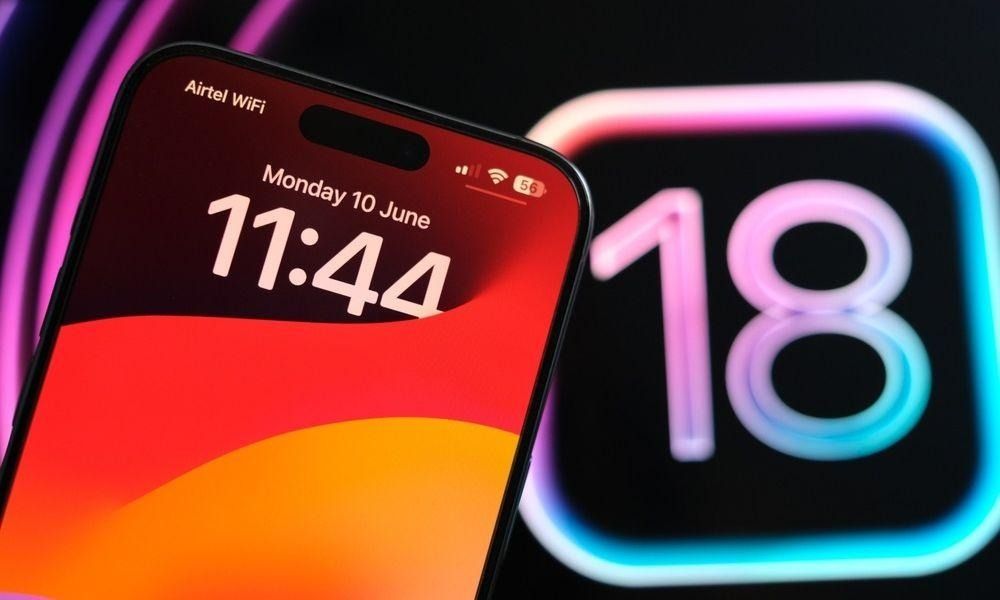

iOS 18.1.1 has arrived, bringing both excitement and challenges for iPhone users. As with any software update, it’s crucial to understand the potential issues and available fixes. Let’s learn more about this topic below with Level Devil. In this comprehensive guide, we’ll explore the latest iOS update, its impact on various iPhone models, and what you need to know to make the most of your device.
iOS 18.1.1 is the latest iteration of Apple’s mobile operating system, designed to enhance the user experience and address previous issues. This update introduces several new features and improvements, aiming to elevate the iOS ecosystem to new heights. As we delve into the intricacies of this update, it’s essential to note that while it brings numerous benefits, some users have reported encountering bugs and glitches. Let’s explore these aspects in detail to provide a comprehensive overview of what iPhone users can expect.
One of the most notable changes in iOS 18.1.1 is the improved performance and stability across various iPhone models. Apple has focused on optimizing system processes, resulting in smoother operations and faster app launches. This enhancement is particularly noticeable on older iPhone models, breathing new life into devices that may have begun to show signs of sluggishness. The update also introduces refined animations and transitions, contributing to a more fluid and responsive user interface.
Security has always been a top priority for Apple, and iOS 18.1.1 continues this tradition with enhanced privacy features. The update includes improved encryption protocols and more granular control over app permissions, empowering users to better manage their personal data. Additionally, the introduction of advanced phishing detection in Safari adds an extra layer of protection against online threats, making browsing safer for all users.
Despite the numerous improvements, some users have reported encountering issues after updating to iOS 18.1.1. It’s important to note that these problems don’t affect all users and may vary depending on the iPhone model and individual usage patterns. However, being aware of potential issues can help users make informed decisions about updating and troubleshooting if necessary.
One of the most frequently reported issues is battery drain. Some users have noticed a significant decrease in battery life after updating to iOS 18.1.1. This problem seems to be more prevalent in older iPhone models, suggesting that the new features and processes may be more demanding on older hardware. While Apple typically addresses such issues in subsequent updates, users experiencing severe battery drain may need to consider temporary workarounds or adjustments to their device settings.
Another common complaint revolves around Wi-Fi connectivity problems. Some users have reported difficulties connecting to Wi-Fi networks or experiencing frequent disconnections after the update. This issue can be particularly frustrating for those who rely heavily on Wi-Fi for data-intensive tasks or to conserve cellular data. In some cases, the problem may be related to network settings that need to be reset or adjusted.
App compatibility is another area where some users have encountered difficulties. While most apps should work seamlessly with iOS 18.1.1, some third-party applications may experience crashes or performance issues. This is often due to developers needing time to update their apps to fully support the latest iOS version. Users who rely on specific apps for work or personal use may want to check for any known compatibility issues before updating.
Bluetooth connectivity, particularly with AirPods and other wireless accessories, has been a point of concern for some users after updating to iOS 18.1.1. Reports of intermittent connections, audio dropouts, and difficulty pairing devices have surfaced. These issues can significantly impact the user experience, especially for those who frequently use wireless headphones or rely on Bluetooth for car connectivity. Apple has acknowledged some of these concerns and is likely working on fixes for future updates.
In the meantime, users experiencing Bluetooth-related issues can try several troubleshooting steps. These include forgetting and re-pairing devices, resetting network settings, and ensuring that both the iPhone and the Bluetooth accessory have the latest firmware updates. In some cases, a simple restart of both devices can resolve temporary connectivity issues.
While Apple continues to work on official fixes for reported issues, there are several steps users can take to mitigate problems and improve their iOS 18.1.1 experience. These workarounds may not solve all issues for every user, but they can often provide significant improvements or temporary relief until more permanent solutions are available.
For users experiencing battery drain issues, several strategies can help extend battery life. Adjusting screen brightness, disabling unnecessary background app refresh, and limiting location services for apps that don’t require constant access can all contribute to improved battery performance. Additionally, users can check their battery health in the Settings app and consider a battery replacement if the maximum capacity has significantly degraded.
To address Wi-Fi connectivity problems, users can try resetting their network settings. This process will remove all saved Wi-Fi networks and passwords, so it’s important to have this information on hand before proceeding. To reset network settings, go to Settings > General > Reset > Reset Network Settings. After the reset, reconnect to your Wi-Fi networks and see if the issue persists. If problems continue, consider updating your router’s firmware or contacting your internet service provider for further assistance.
For app compatibility issues, the first step is to ensure all apps are up to date. Developers often release updates to address compatibility with new iOS versions. If an app continues to crash or perform poorly, try uninstalling and reinstalling it. In some cases, clearing the app’s cache or data (if the option is available) can resolve issues. As a last resort, contact the app developer directly to report the problem and inquire about potential fixes or workarounds.
To ensure optimal performance on iOS 18.1.1, users can take several steps to streamline their device. Start by decluttering your iPhone, removing unused apps, and clearing out old photos and videos. This not only frees up storage space but can also improve overall system performance. Additionally, disabling unnecessary visual effects and reducing motion can help older devices run more smoothly.
Regularly restarting your iPhone can also help maintain performance and resolve minor glitches. Consider setting a reminder to restart your device once a week. This simple action can clear temporary files, refresh system processes, and often resolve minor software hiccups that may accumulate over time.
As Apple continues to refine iOS 18, users can expect future updates to address many of the issues currently experienced with iOS 18.1.1. The company has a history of quickly responding to user feedback and releasing patches for significant bugs and performance issues. While the exact timeline for these updates may vary, it’s reasonable to anticipate incremental improvements in the coming weeks and months.
One area likely to see continued focus is battery optimization. Apple has consistently worked to improve battery life across iOS iterations, and future updates will likely include further refinements to power management algorithms. This could potentially alleviate some of the battery drain issues reported by users of iOS 18.1.1.
Security enhancements are another aspect that will undoubtedly receive ongoing attention. As cyber threats evolve, Apple will continue to strengthen iOS defenses to protect user data and privacy. This may include improvements to existing features like Face ID and Touch ID, as well as the introduction of new security measures to combat emerging threats.
Users can also look forward to new features and functionality in future iOS updates. While major features are typically reserved for annual releases, smaller updates often introduce refinements to existing capabilities or minor new additions. These could include improvements to the camera software, enhanced Siri functionality, or new customization options for the home screen and widgets.
To ensure a smooth experience with future iOS updates, users should take proactive steps to prepare their devices. Regularly backing up your iPhone, either to iCloud or a computer, is crucial. This ensures that your data is safe and can be easily restored if any issues arise during the update process.
Keeping your apps up to date is also important. App developers often release updates in anticipation of new iOS versions, ensuring compatibility and taking advantage of new features. By maintaining updated apps, you can minimize potential conflicts and enjoy a more stable experience when upgrading to new iOS versions.
Lastly, staying informed about upcoming updates and their features can help you make informed decisions about when to update your device.